Australian Scientists Develop Method that Literally ‘Sees’ into the Quantum Future
| Arthur Dominic Villasanta | | Jan 14, 2017 09:22 PM EST |
(Photo : University of Sydney ) Trapped Ytterbium ions were used as one of the most advanced laboratory quantum systems for this study.
Scientists at the University of Sydney have demonstrated the ability to predict how quantum systems will change and then prevent the system from breaking down.
This capability to "see" into the future is being hailed as a major achievement that could help bring the strange but powerful world of quantum technology closer to reality.
Like Us on Facebook
A significant obstacle to building reliable quantum technologies such as quantum computers (which are far more powerful than digital computers) has been the phenomenon called "decoherence," or the randomization of quantum systems by their environments that effectively destroys the useful quantum character.
University of Sydney physicists took a technical quantum leap in addressing decoherence, and used techniques from big data to predict how quantum systems will change. This gave them the ability to prevent a system's from breaking down.
"Much the way the individual components in mobile phones will eventually fail, so too do quantum systems," said the paper's senior author Professor Michael J. Biercuk.
"But in quantum technology the lifetime is generally measured in fractions of a second, rather than years."
Prof. Biercuk said his group had demonstrated it was possible to suppress decoherence in a preventive manner. The key was to develop a technique to predict how the system would disintegrate.
He noted the immense challenges of making predictions in a quantum world.
"Humans routinely employ predictive techniques in our daily experience. For instance, when we play tennis we predict where the ball will end-up based on observations of the airborne ball," he said.
"This works because the rules that govern how the ball will move, like gravity, are regular and known. But what if the rules changed randomly while the ball was on its way to you? In that case it's next to impossible to predict the future behavior of that ball.
"And yet this situation is exactly what we had to deal with because the disintegration of quantum systems is random. Moreover, in the quantum realm observation erases quantumness, so our team needed to be able to guess how and when the system would randomly break.
"We effectively needed to swing at the randomly moving tennis ball while blindfolded."
The team turned to machine learning for help in keeping their quantum systems -- qubits realized in trapped atoms -- from breaking.
What might look like random behavior actually contained enough information for a computer program to guess how the system would change in the future. It could then predict the future without direct observation, which would otherwise erase the system's useful characteristics.
The predictions were remarkably accurate, allowing the team to use their guesses preemptively to compensate for the anticipated changes.
Doing this in real time allowed the team to prevent the disintegration of the quantum character, extending the useful lifetime of the qubits.
"We know that building real quantum technologies will require major advances in our ability to control and stabilize qubits - to make them useful in applications," said Prof. Biercuk.
"Our techniques apply to any qubit, built in any technology, including the special superconducting circuits being used by major corporations.
"We're excited to be developing new capabilities that turn quantum systems from novelties into useful technologies. The quantum future is looking better all the time."
The applications of quantum-enabled technologies are compelling and already demonstrating significant impacts, especially in the realm of sensing and metrology. And the potential to build exceptionally powerful quantum computers using quantum bits, or qubits, is driving investment from the world's largest companies.
This research was published in the peer-reviewed journal, Nature Communications.
TagsUniversity of Sydney, quantum systems, Quantum, decoherence, Professor Michael J. Biercuk
©2015 Chinatopix All rights reserved. Do not reproduce without permission
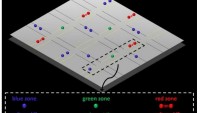 Scientists Invent Revolutionary New Method that Simplifies Construction of Quantum Computers
Scientists Invent Revolutionary New Method that Simplifies Construction of Quantum Computers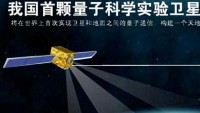 China Activates World’s Longest Ultra Secure Quantum Communication Network
China Activates World’s Longest Ultra Secure Quantum Communication Network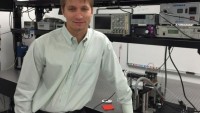 UCF Scientists Develop Most Efficient Quantum Cascade Laser Yet
UCF Scientists Develop Most Efficient Quantum Cascade Laser Yet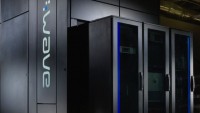 Quantum Computing Firm to Expand Military Business with Washington DC Subsidiary
Quantum Computing Firm to Expand Military Business with Washington DC Subsidiary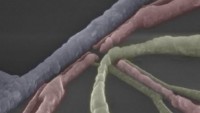 Quantum Computing Leap: 10-fold Boost in Stability Achieved with Dressed Qubit
Quantum Computing Leap: 10-fold Boost in Stability Achieved with Dressed Qubit
EDITOR'S PICKS
-

Did the Trump administration just announce plans for a trade war with ‘hostile’ China and Russia?
-

US Senate passes Taiwan travel bill slammed by China
-

As Yan Sihong’s family grieves, here are other Chinese students who went missing abroad. Some have never been found
-

Beijing blasts Western critics who ‘smear China’ with the term sharp power
-

China Envoy Seeks to Defuse Tensions With U.S. as a Trade War Brews
-

Singapore's Deputy PM Provides Bitcoin Vote of Confidence Amid China's Blanket Bans
-

China warns investors over risks in overseas virtual currency trading
-

Chinese government most trustworthy: survey
-

Kashima Antlers On Course For Back-To-Back Titles
MOST POPULAR
LATEST NEWS
Zhou Yongkang: China's Former Security Chief Sentenced to Life in Prison

China's former Chief of the Ministry of Public Security, Zhou Yongkang, has been given a life sentence after he was found guilty of abusing his office, bribery and deliberately ... Full Article
TRENDING STORY

China Pork Prices Expected to Stabilize As The Supplies Recover

Elephone P9000 Smartphone is now on Sale on Amazon India

There's a Big Chance Cliffhangers Won't Still Be Resolved When Grey's Anatomy Season 13 Returns

Supreme Court Ruled on Samsung vs Apple Dispute for Patent Infringement

Microsoft Surface Pro 5 Rumors and Release Date: What is the Latest?










